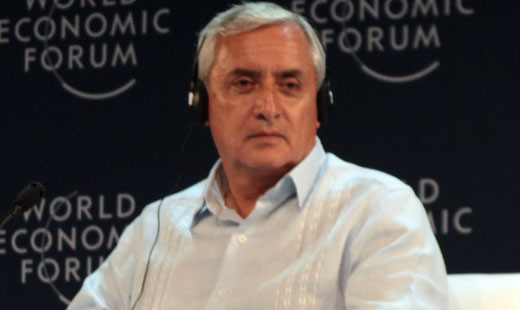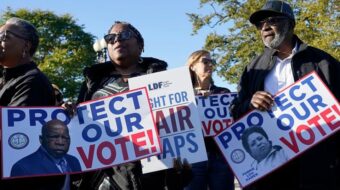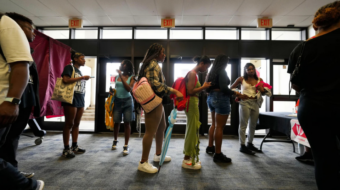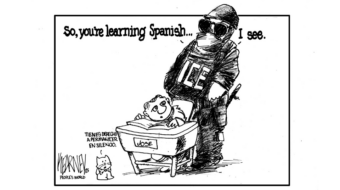
Guatemalan police and military forces shot and killed several indigenous protesters on Oct. 4. About 40 were wounded; six apparently died. The incident happened at the Alaska Peak near the town of Totonicapán, population 94,000, in the Western Highlands of this Central American country. All the dead were local indigenous people, speakers of the K’iche’ Maya language. They had been participating in peaceful civil disobedience, blocking a section of the Interamerican Highway at the Four Crossroads.
The protest had been organized by the Indigenous Mayoral Council (Alcaldía Indígena), which is regarded by the Mayas as representing 48 of their communities in their relations with the national government in Guatemala City. Among their demands were: cutbacks in recently increased electricity fees, improvements in the national school system, and that the government backed down from constitutional reforms which would give the military a greater role in civil society.
The protesters were met by elements of the armed forces and the National Civil Police, who, evidently ordered to disperse them, opened fire, resulting in the deaths and injuries.
The role of the military in Guatemalan society is an extremely sore point. In 1954, the U.S. Central Intelligence Agency organized the overthrow of left-wing President Jacobo Arbenz. Arbenz had angered both Guatemalan economic elites and the U.S. with land reform projects that targeted the holdings of big landowners and also of the United Fruit Corporation, in which U.S. Secretary of State John Foster Dulles and his brother, CIA head Alan Dulles, had investments.
The overthrow of Arbenz put an end, not only to any attempts at land and social reform, but to anything more than the pretence of democratic government in Guatemala for decades. Military dictators and puppet civilian presidents followed each other in office, while in the countryside, both indigenous and non-indigenous guerrilla fighters fought a lopsided war with the government’s forces.
The successive governments of Guatemala were over-achievers in the atrocity department. The war cost at least 200,000 lives (Guatemala’s population today is 14 million). The number of atrocities, the vast majority perpetrated by the military, police and government-run militias, is mind-boggling. The government’s repressive activities were supported by the U.S. government and by U.S., Israeli, and Argentine advisers.
In 1996, the main rebel coalition signed a peace agreement with the government, and there has not been another coup d’état. But personal security and abuses by military and police are still very problematic, and the increase in the drug trade has negatively affected Guatemala as it has its neighbors to the south, El Salvador and Honduras. Some of the worst offenders against human rights are still around and active in Guatemalan politics, including the most bloodthirsty dictator of them all, General Efrain Rios Montt, who ruled from 1982 to 1983.
The current right-wing president of Guatemala, General Otto Perez Molina, was elected in November 2011 after the former president, centrist Alvaro Colom, failed in an attempt to get around the Constitution so his popular wife could run for the position. Perez Molina has been accused of involvement with human rights violations in his former capacity as a military officer in the K’iche’ speaking area of the Western Highlands.
So worry about an increase in repression is part of the background of the Oct. 4 Totonicapán incident. The incident has raised fears of a return to the bad old days. Nobel Peace Prize winner Rigoberta Menchú Tum, who is herself a K’iche’ Maya from the Western Highlands (several of the dead and wounded bear the Maya surname Menchú), has demanded that the Oct. 4 incident be investigated and the people responsible brought to justice. Menchú has worried about a return to a militarization of security work, and has called for an investigation by the International Tribunal Against Impunity in Guatemala and other bodies.
Civil society organizations are also demanding the demilitarization of all public security activities and adherence to the 1996 peace accords.
The nation’s chief prosecutorial officer, Claudia Paz y Paz, who got her job in 2010 before Perez Molina’s election and has shown a strong independent streak, has diligently pursued prosecution of human rights violations, including by Rios Montt. She has now opened an investigation into the Totonicapán incident, and a colonel and eight soldiers have already been arrested in the case. In a preliminary statement, Ms. Paz y Paz faulted the officer in charge of the military unit on the scene for running away and thus losing control of his troops.
President Perez Molina, after initially trying to deny that the event had happened, also made a conciliatory statement, to the effect that military personnel would no longer be employed to suppress demonstrations.
Photo: Guatemala’s current right-wing leader, Otto Perez Molina. Flickr










